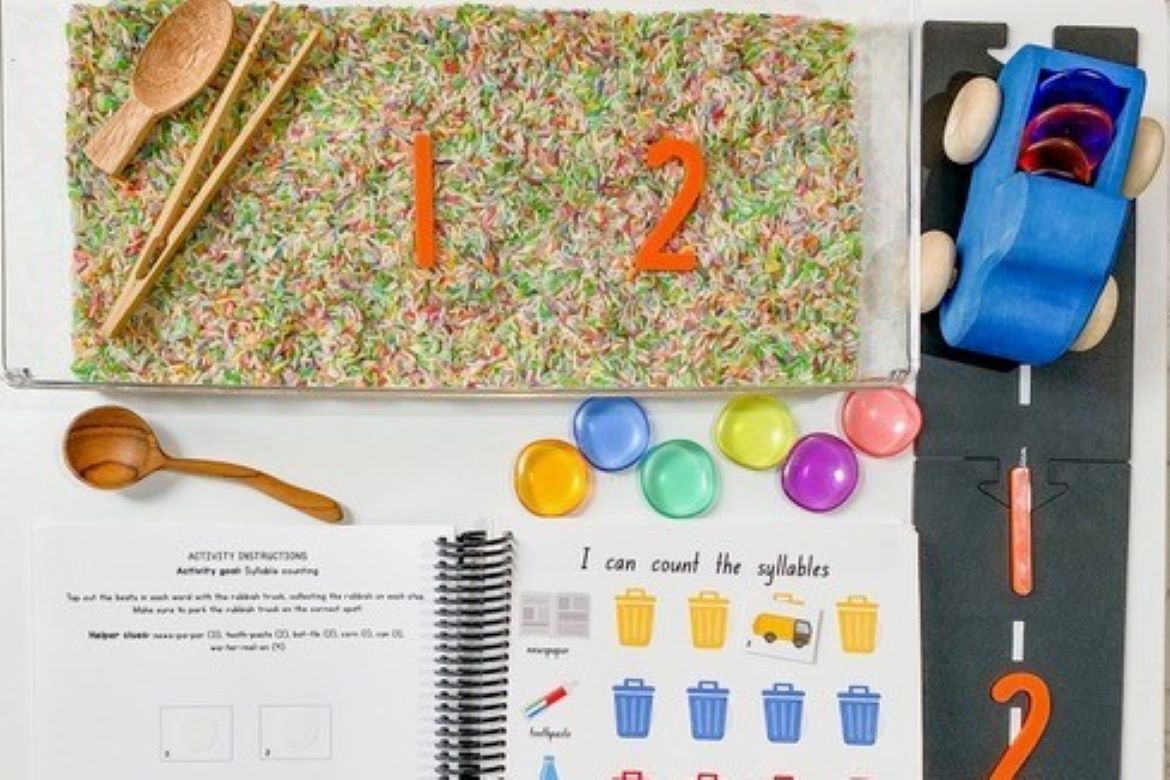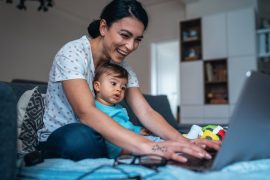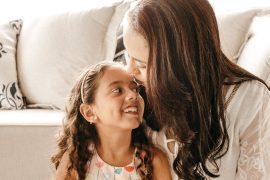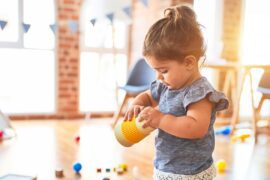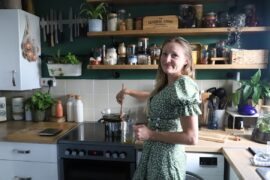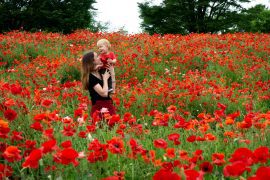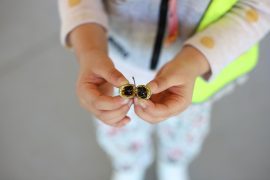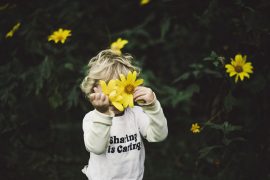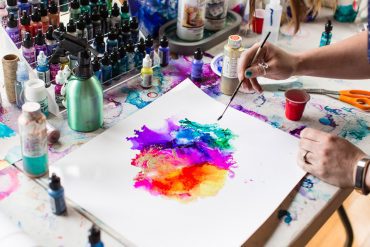By Early Years Educator Angie from www.instagram.com/popandpudplay
From the moment children are nestled in the womb, oral language and sounds play a vital role in building the foundation for language, pre-literacy, reading and writing skills (think ALL the things a child has to learn and develop before moving on to reading and writing). Yes, truly from that early on, amazing isn’t it. To delve a little deeper, early language and literacy development are not just isolated to being the building blocks for only language and literacy skills. They are imperative to a child’s holistic growth as these skills stimulate the brain’s neurological development by nurturing, supporting and connecting a child’s cognitive, social and emotional developmental areas as well. While I’m sure that doesn’t come as a surprise, when we sit and take a moment, it is still mind blowing!
Early language and literacy development does all of these amazing things through a natural and sequential learning of sounds, words, sentences and the connection of these through observation, interpretation and meaning within the early years of childhood development. When these series of chronological stages are supported by foundational literacy concepts under the phonological awareness umbrella, it provides an enriching space for children to connect to their world and begin to form understanding of their identity. This is inclusive of not only developing language and communication skills, but also developing and maintaining relationships, expressing and understanding emotions, problem solving, extending their knowledge and learning and much much more.
From the moment children are nestled in the womb, oral language and sounds play a vital role in building the foundation for language, pre-literacy, reading and writing skills…
It’s a lot to take in isn’t it? As a caregiver the fear of doing “all the things right” is an overwhelming anxiety driving “where is the manual?” panic. Especially when language is such an important developmental milestone. (I mean all developmental areas are important, but I personally feel language and communication are right up there with high anxiety induced panic). But before we spiral into that overwhelming feeling we get when we think about the complexities of language, let’s break it down and think about sound for a second. Sound is one of the most powerful resources we have that connects so many parts of us and our world together. Think from music and the memories it triggers, to emotions, thoughts, and reactions right through to how each and every word we say is made up and the tones that accompany. Communicating messages between us such as a horn honking, a whistle, a siren or the way our words are made up of connections of different sounds and tones.
So many sounds of communication are learnt from an early age and embedded into our neural pathways so deep they become automatic from our interpretation to our response. Another part of how pre-literacy skills develop for children is through the awareness of their own speech. This occurs through the steps of perceiving sentences as a string of words, to identifying that a single word is made up of syllables, to understanding and being able to break down words into individual sounds. So, with all of this combined, it is no surprise the importance of sound when we are beginning the journey of phonological awareness and phonics.
The phonological awareness umbrella encompasses and strengthens the natural progression of language and skills children require for reading and writing in a series of sequential steps: Syllable level, Word level and Phoneme level. The absolute beauty surrounding the stages of the phonological umbrella is they can be supported and implemented in endless ways. This includes through everyday routines, interactions, conversations and of course through play. Children absorb everything, simultaneously through their senses, learning and interpreting all that is around them. Hearing sounds, seeing words and letters, speaking sounds/words. Combined with being tactile learners, incorporating phonological learning through play is a powerful combination in utilising all the ways a child can absorb new information while being at a present and immersed level of engagement.
Children absorb everything, simultaneously through their senses, learning and interpreting all that is around them.
In our home, Charlie has reached the age and stage where he is expressing and sounding out sounds in words, picking up on words that “sound the same Mumma!” and correcting himself at times when he pronounces words – definitely showing signs that he is picking up on sounds and connecting them to meaning. So, to begin engaging his interest in sounds and scaffold learning by extending on his exposure to sounds and connection to his world, I grabbed our ‘Starting with sounds’ busy book, pages 1-3. I created a hide and seek sensory tray with the focus on words with 1 and 2 syllables only with the 3 and 4 syllable words completed. I added a dry sensory base (coloured rice) some tactile counter pieces and the numbers 1 and 2 added and a car for movement. With this set up, it allows for Charlie to explore 1 and 2 syllable words through different mediums – clapping, using the counters as he speaks, or driving the car to each “destination” (being the number 1 or 2).
When Charlie discovered the setup, he dove right in and began to explore. Straight away he was able to identify the colour matching of the tabs to each word on each page. From there, I briefly explained how he can problem solve where to place each truck tab on the same-coloured bin (by sounding out the syllables in each word). By hiding the tabs in the sensory base, it kept the activity engaging as he quickly became excited by the surprise of what the next tab would be. I then stepped back and just observed his play for some time, offering assistance when he would ask me a question or needed some guidance or role modelling with a word he was not sure how to sound out.
Resources: Starting with Sounds Busy Book from Busy Books Australia: pages 1-3 (I only used the tabs for words with 1 and 2 syllables), tray, dry sensory base, tongs, spoon, acrylic numbers, pebble counters, car and road base.
Steps: Grab your Starting with Sounds Busy Book page 1-3.
Add your dry sensory base to the tray (enough to cover the tabs if you want to hide them). We then added some counters, acrylic numbers (only 1 and 2), spoon and tongs in case Charlie felt like using them in his play. You can set it up however you feel your child would enjoy it best.
Goals: For Charlie to increase his knowledge and awareness of sounds and syllables. This activity supports the early years curriculum by linking to:
EYLF Outcome 4: Children are confident and involved learners
Principle: High expectations and equity
Practice: Learning through play

